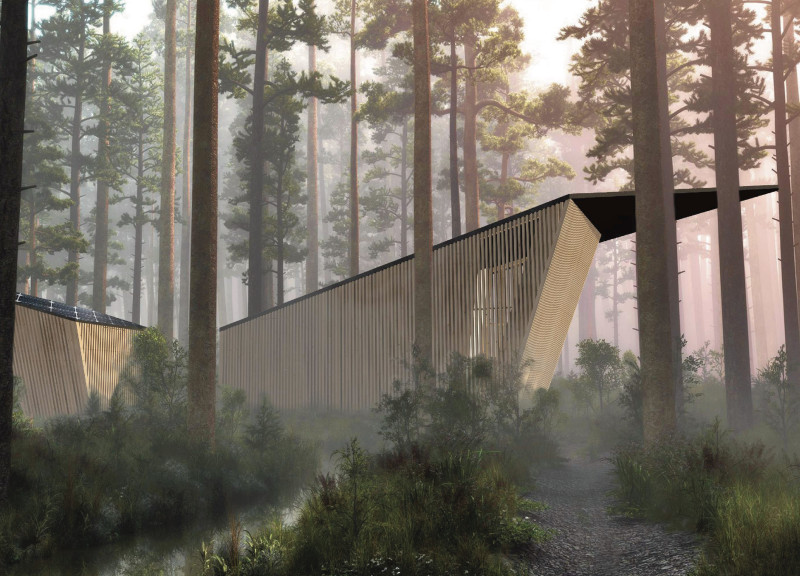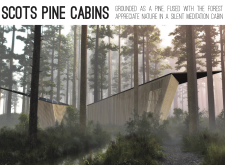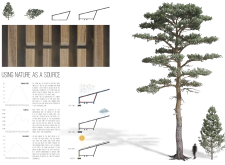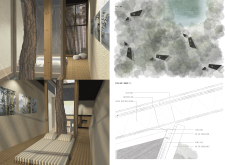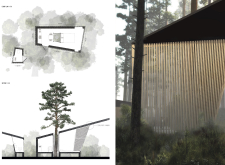5 key facts about this project
The Scots Pine Cabins project is located in the tranquil pine forests of Latvia and functions as a retreat for meditation and reflection. The design emphasizes a close connection with nature, creating an environment that encourages users to experience calm and contemplation. Sustainability plays a central role in the concept, focusing on comfort while reducing environmental impact.
Form and Structure
The cabins are constructed using a timber frame that relies primarily on locally sourced pine wood, reinforcing a connection to the surrounding landscape. This choice of material supports both structural stability and environmental sustainability. The simple geometric forms of the cabins and their sloped roofs enhance functionality while blending into the forest backdrop without disrupting the visual continuity of the area.
Sustainable Systems
A prominent feature of the design is its commitment to energy efficiency. The roofs are designed to accommodate solar panels, allowing for effective use of renewable energy. This design choice contributes to the cabins' energy needs, reducing dependency on external sources. The steeply pitched roofs also help manage snow accumulation, ensuring that the cabins remain practical in winter weather conditions.
Water Management
The project includes an efficient rainwater harvesting system. With ample roof area, rainwater is collected and stored in an underground tank, providing both cold and hot water for the cabins. This system works in conjunction with a heat pump situated below the cabin, which connects to the solar energy system. Together, these elements demonstrate a thoughtful approach to resource management, ensuring the cabins operate effectively and sustainably.
Interior Comfort
Inside, natural wood fibers are used for insulation, contributing to a comfortable living environment. The cabins are designed to stay warm during colder months and cool when temperatures rise. Large windows are thoughtfully placed to frame views of the forest, enhancing the experience of being surrounded by nature. The layout promotes quietness and peace, allowing visitors to engage in meditation or simply enjoy the stillness of the landscape, reinforcing the aim of creating a retreat that feels in tune with its natural setting.


